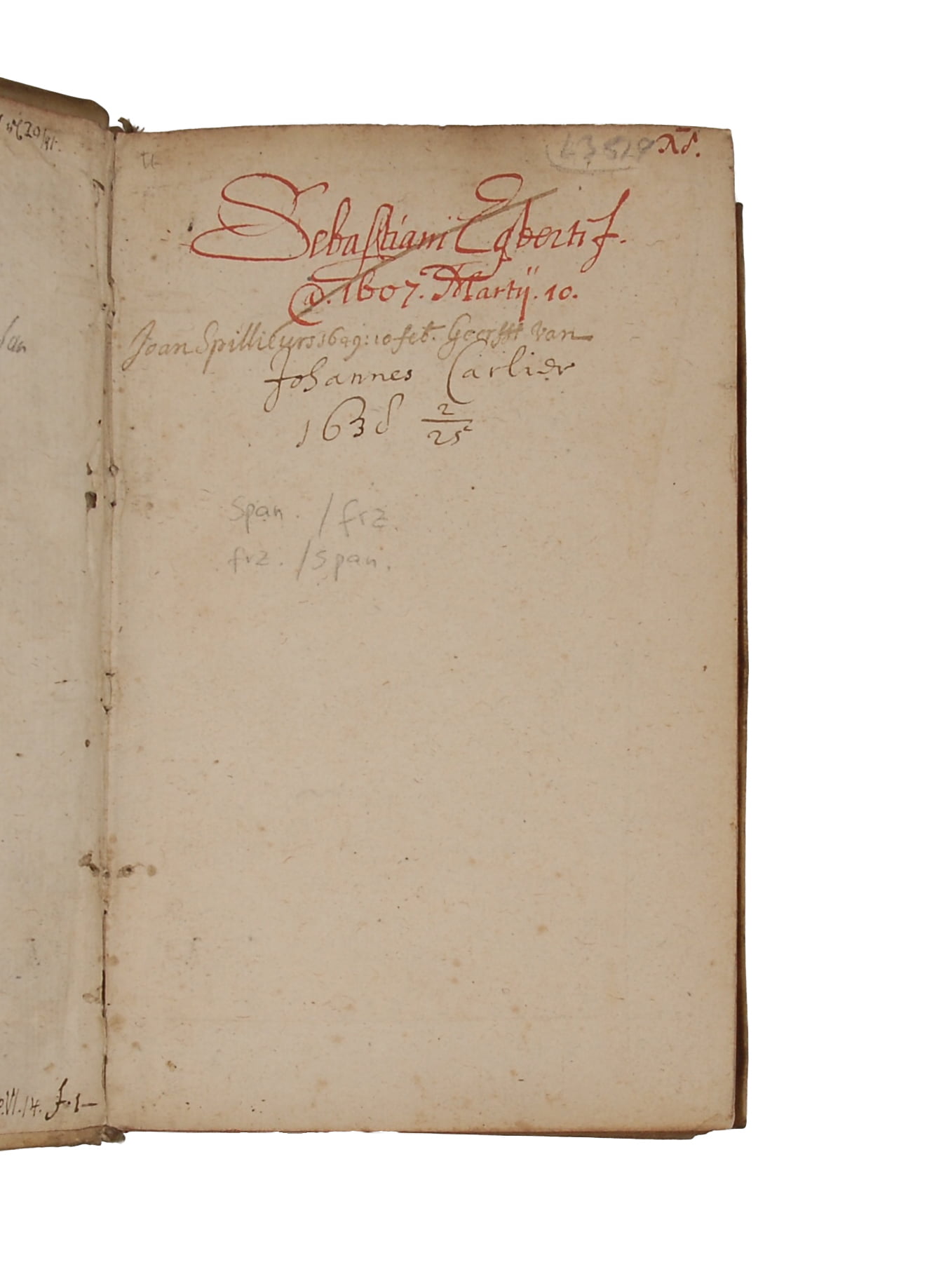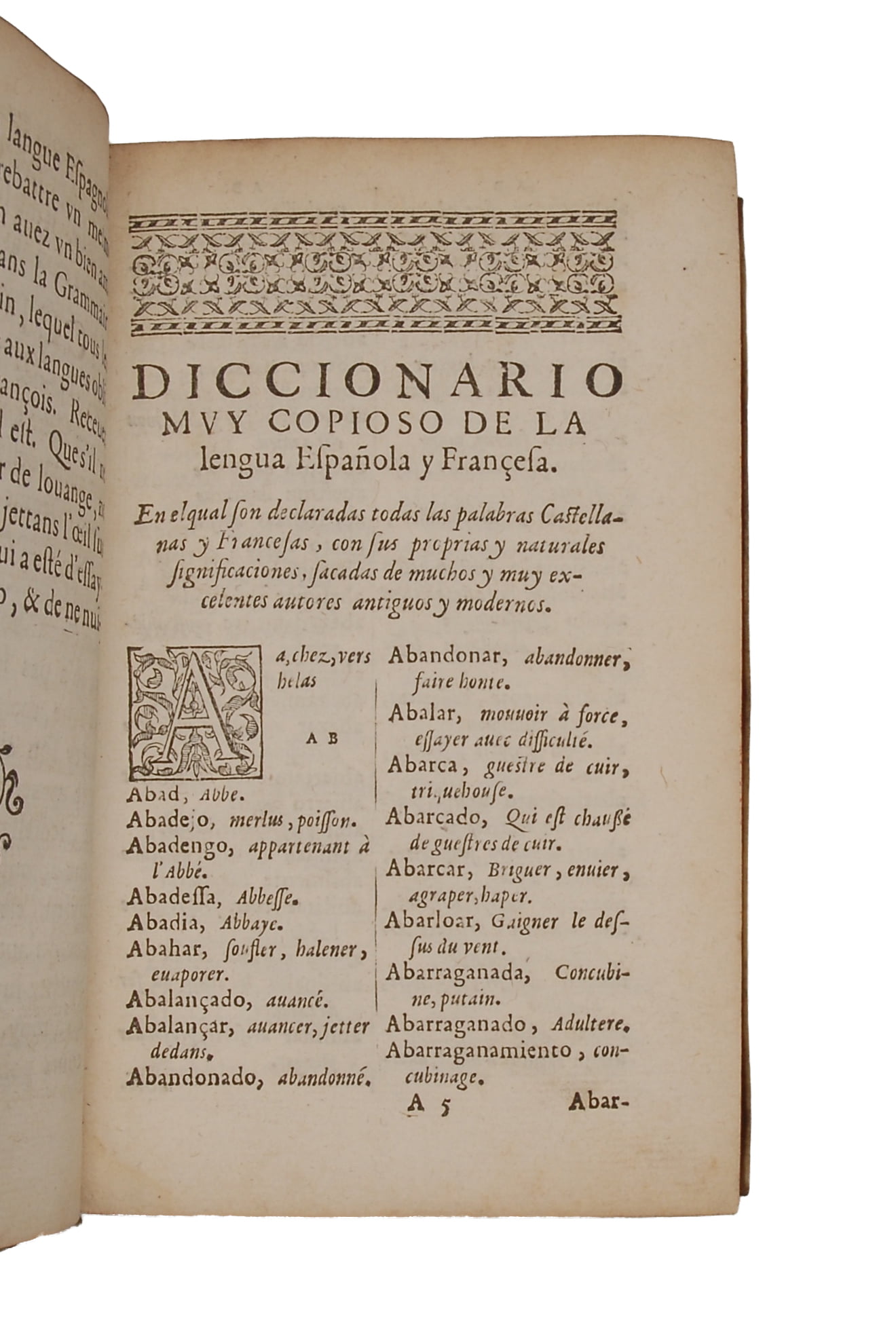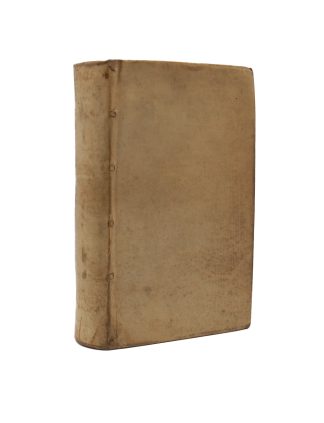PALLET, Jean.
AN ANATOMIST’S COPY
Diccionario muy copioso de la lengua Española y Françesa.
Bruxelles, chez Rutger Velpius, 1606£1,650.00
8vo. 2 parts in 1, 414, 306 unnumbered pp. Roman letter, with Italic, double column. Decorated initials and ornaments. Slight marginal foxing, upper edge dusty, light age browning to a few gatherings, intermittent light water stain to lower blank margin of second part. A good, clean copy in contemporary Dutch vellum, yapp edges, a.e.r., ms. binder’s instructions (‘E. 8vo.VI.14. F[lorins?] 1’) to front pastedown, ms. ex-libris ‘Sebastiani Egberti (?) @ 1607 Martij 10’ (in red), ‘Joan Spillieurs 1649: 10 feb. Geerfft van’ and ‘Johannes Carlier 1638 2/25’ to ffep.
A good, clean copy of the second edition of the first French-Spanish bilingual dictionary, originally published in Paris in 1604. The French Jean Pallet (or Palet, fl. late C16/early C17) was physician to Henry IV of France and translator from the Italian of ‘Discours de la beauté des Dames (1568). An influential lexicographer, he published his bilingual dictionary only a few years after Hornkens’s French-Spanish-Latin of 1599. Even more than Hornkens, Pallet was catering to the ‘Belgian’ aristocracy, generals and officers who, upon the Infanta’s marriage with Archduke Albert in 1596 and the greater administrative autonomy over the Low Countries granted to them by her father Philip II, found themselves having to deal with a Spanish-speaking court (‘Wörterbücher’, 2977). The printer Velpius was granted a privilege by the Archduke. Whilst the French-Spanish part was mostly based on Hornkens, the Spanish-French section drew on Antonio de Nebrija’s Spanish-Latin dictionary (1492-5) and Cristóval de Las Casas’s popular Tuscan-Castilian dictionary of 1570.
In 1607, this copy was in the library of the Flemish physician Sebastianus Egbertus, professor of anatomy at Amsterdam and author of a commentary on Dodoens’s ‘Herbal’ (1640); he was deemed ‘a man of great learning’ by the anatomist Nicolaes Tulp, famously portrayed by Rembrandt. In 1638, it was in the possession of the lawyer Johannes Carlier (c.1612-48), owner of a substantial library of which the inventory unusually specifies the colour of the shelves and their arrangement in the room (de Jong, p.151); in 1649, the copy was inherited by Johannes Spillieurs, probably the same registered as a student at Leiden.
Four copies recorded in the US.Iberian Books 51730; USTC 5016579; Palau 72982.N. Tulp, Drie boecken der medicijnsche aenmerkingen (Amsterdam, 1650), p.120; J. de Jong, Art of Home in the Netherlands, 1500-1800 (2001); Wörterbücher (Berlin, 1991).In stock










